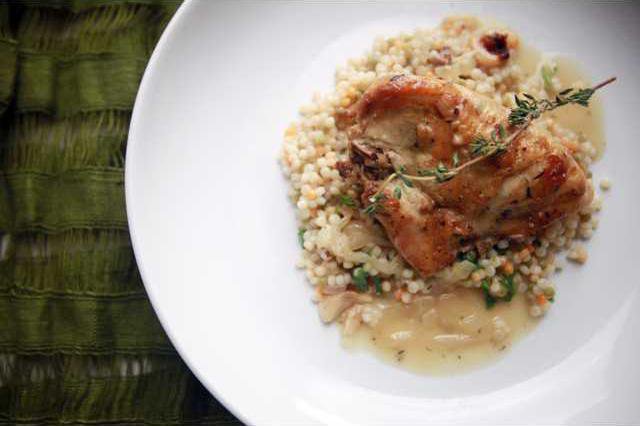Although you can find slow cookers on store shelves and kitchen cabinets all year long, many cooks don’t give them a second thought until the mercury begins to drop in the thermometer. With today’s high’s not expected to get above 48 degrees, I’d say it’s safe to pull them out. Slow cookers are the answer to hectic schedules and the ultimate set-and-forget timesaving appliance. They can be used to keep foods warm or to start a meal from scratch. Slow-cooker recipes have come a long way since the Rival Co. introduced its now trademarked Crock-Pot in the 1970s. There is nothing wrong with the original recipes that called for dumping in some meat or chicken, adding condensed soup and maybe some vegetables — it is comfort food. It just doesn’t always look pretty. You’ll get better results if you take a little bit of time and first brown meats or chicken with the skin on. The added color will make dishes look more inviting. Plus, it’s a way to get rid of some of the fat and build flavor. Here are other slow-cooker tips: Always make sure the insert is at least half-full. Alton Brown, a former cooking show host, recommends purchasing a three-quart slow cooker for day-to-day cooking, since the "machines are most effective when they are about least three-quarters full." Try not to lift the lid while your food is cooking. You lose at least 20 minutes of cooking time when you do so. Add tender vegetables like zucchini, bell peppers and peas during the last 30 minutes or so. Cooking them longer could make them mushy. Most slow-cookers have two settings: low and high. Typically, low is around 200 degrees F, and high is 300 F degrees. "The real difference between low and high isn’t a matter of difference of temperature, but rather time," Brown said during an online tutorial on the Food Network’s website. "Both will take food to the simmer point just below 209 degrees, but whereas a crock full of food may take seven hours to reach that temperature on low heat, an equal amount would reach that temperature in about three hours." He recommends cooking meat dishes on low and vegetable, or baked, dishes on high. Starting a dish with cold ingredients can add an hour or more to your overall cooking time, Brown says. When converting recipes to a slow-cooker, the amount of liquid may need to be reduced because liquid does not evaporate in a slow-cooker like it does on the stovetop. If you have an older slow-cooker that doesn’t have an internal timer like the newer models, Brown says you can remedy that deficit by plugging your cooker into a lamp timer that you can purchase from a hardware store. Today’s recipe is adapted from the December issue of "Everyday Food." The original recipe called for cutting a whole chicken, but this version uses bone-in chicken breasts instead. You also can use a mix of chicken pieces. The chicken can be seasoned in an oil and vinegar-based marinade with some crushed garlic and seasonings. You can marinate the meat for several hours, or overnight. MCT Information Services contributed to this article.
With hectic holidays over, simple sounds good.
So warm up with some easy slow-cooker dishes.

